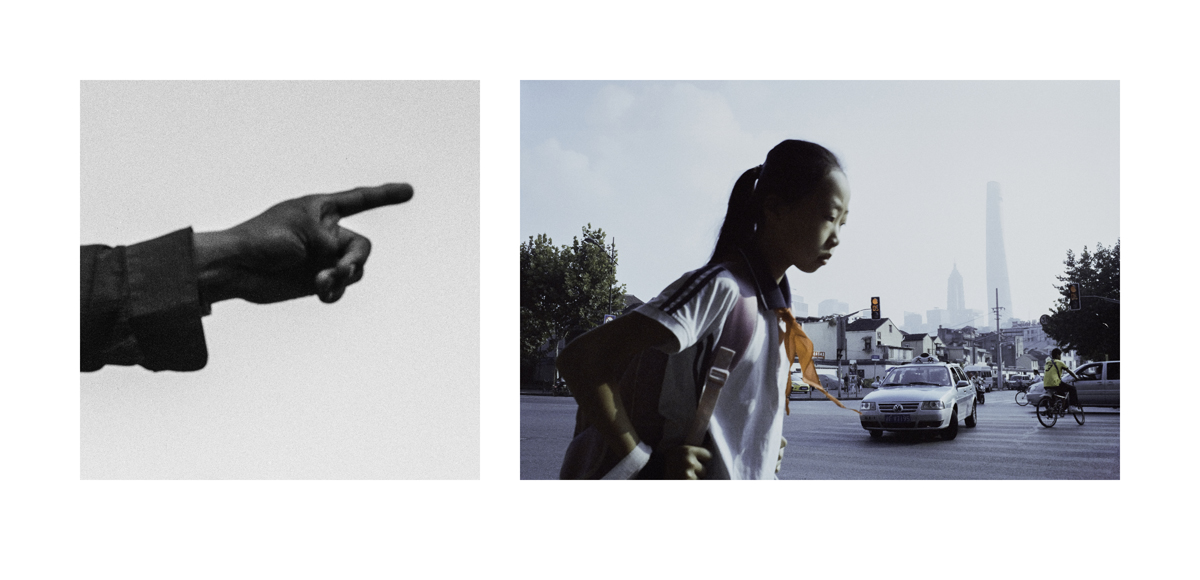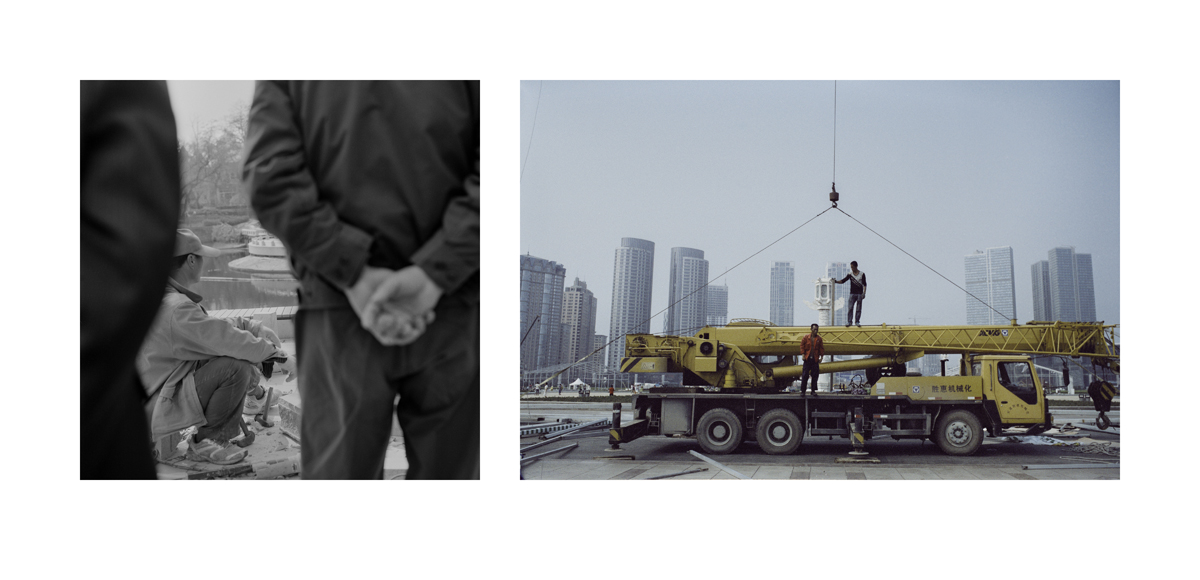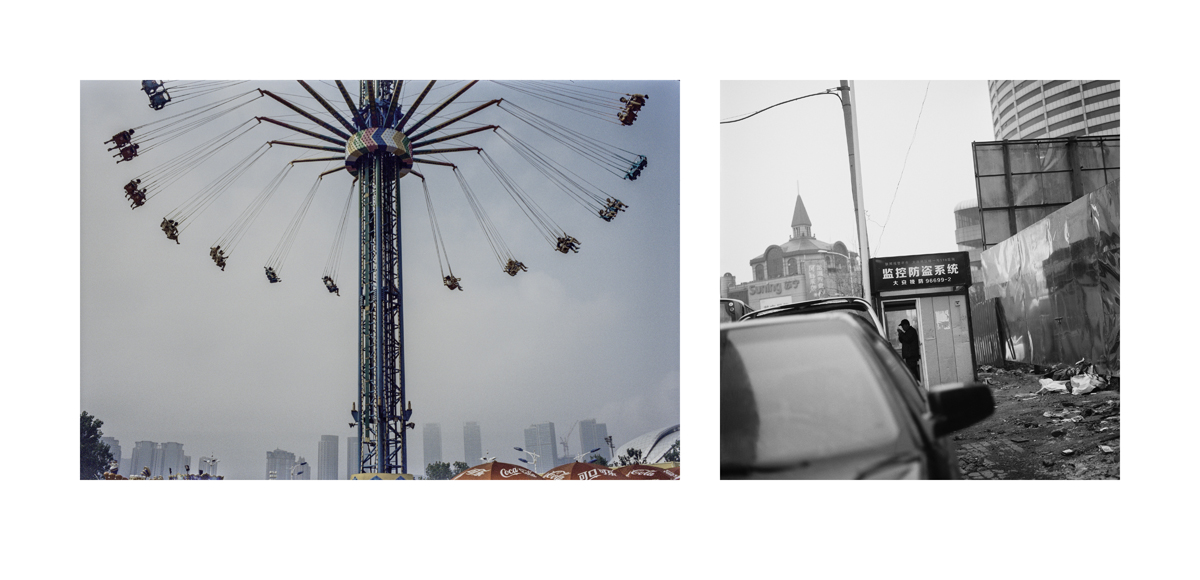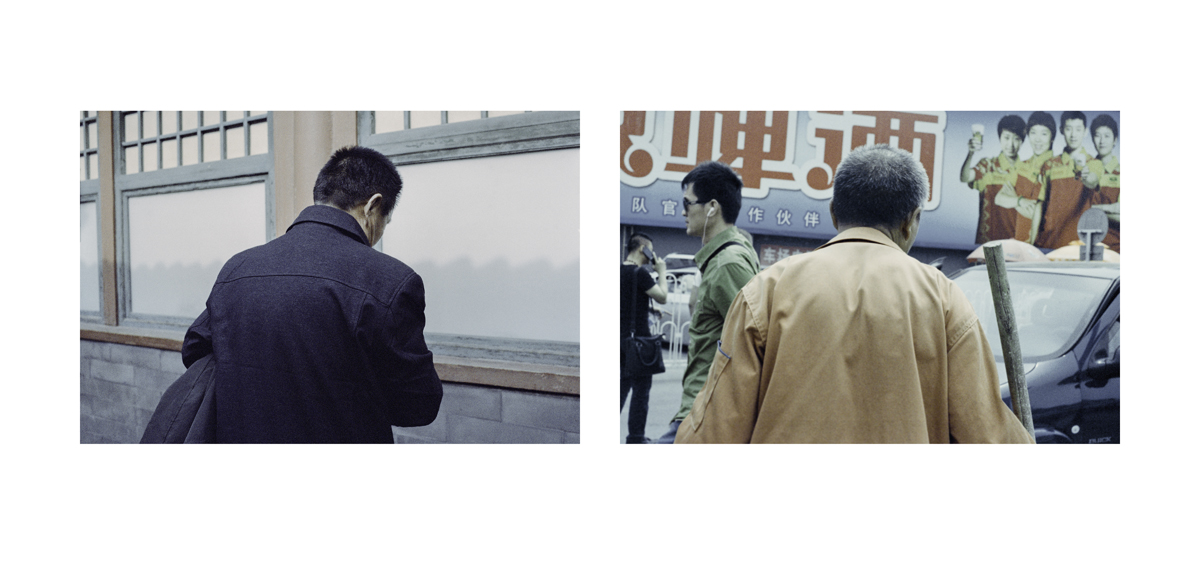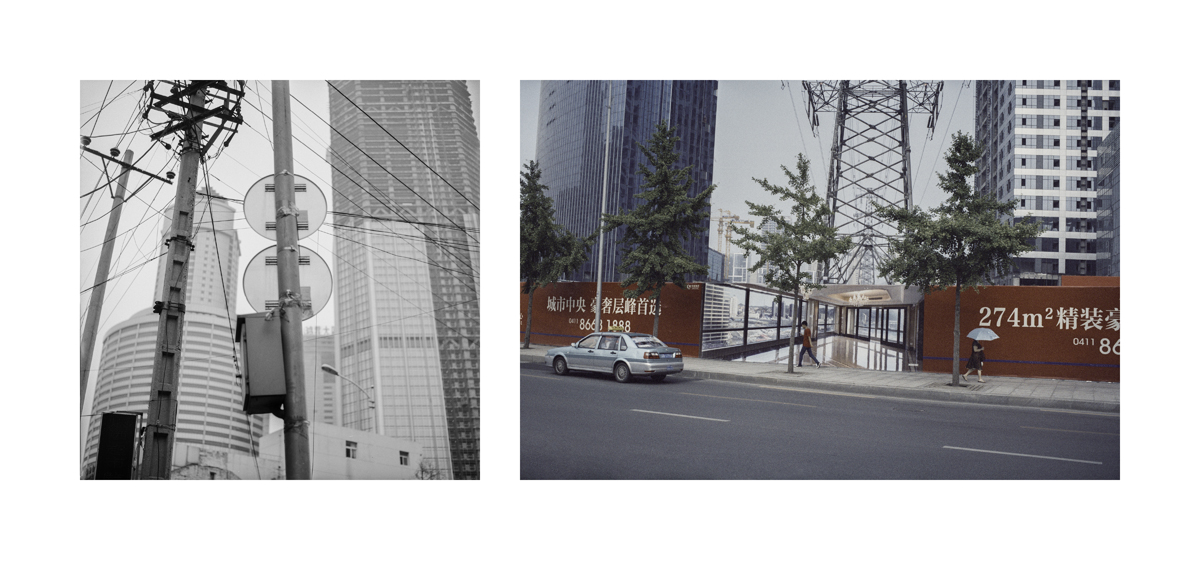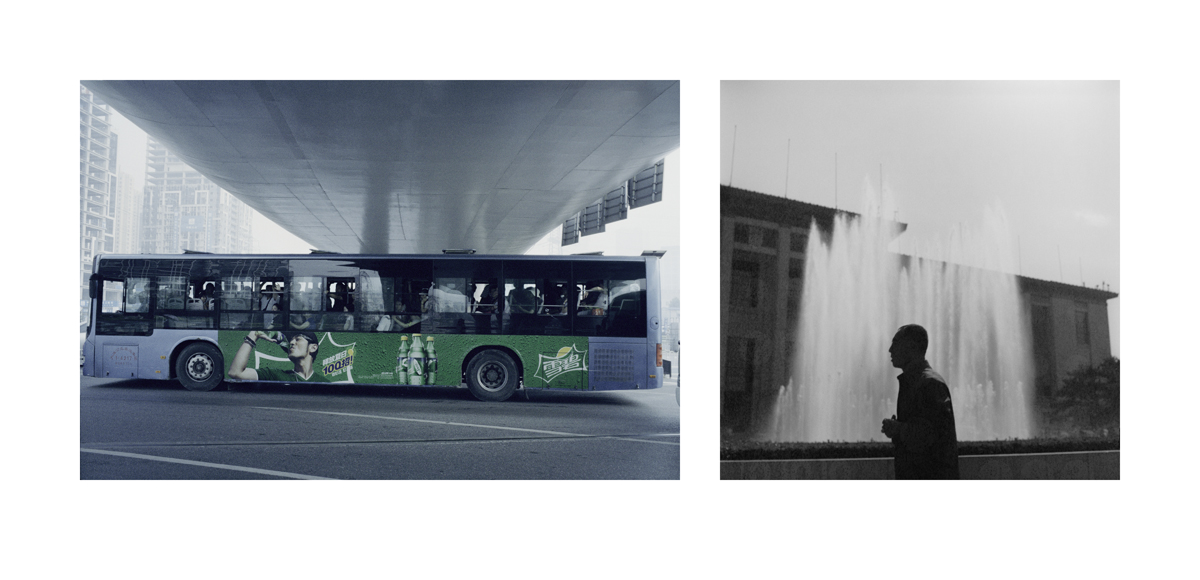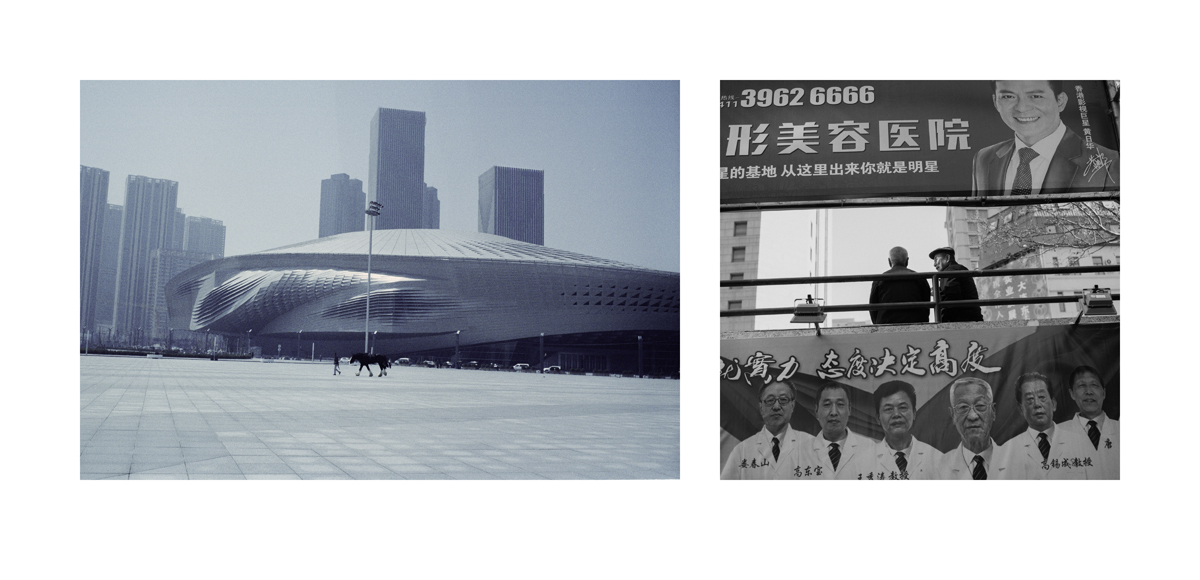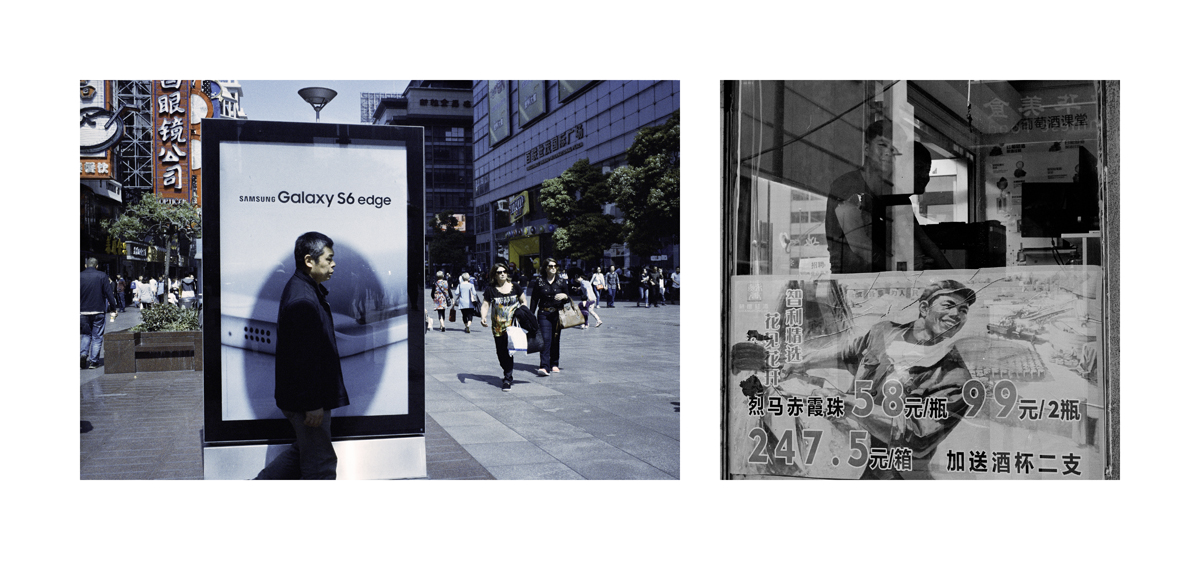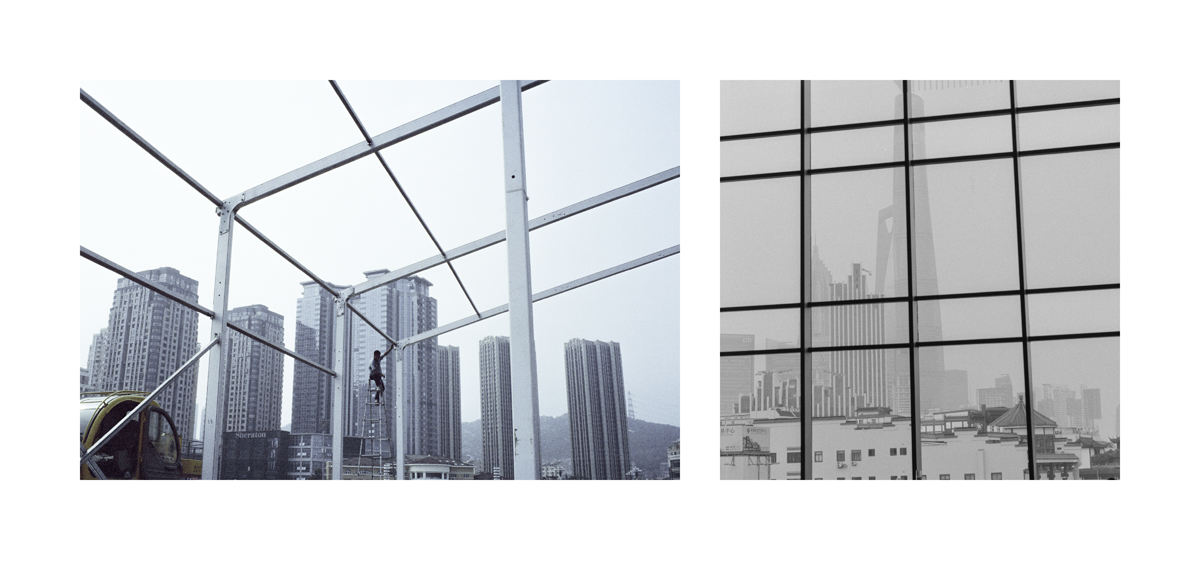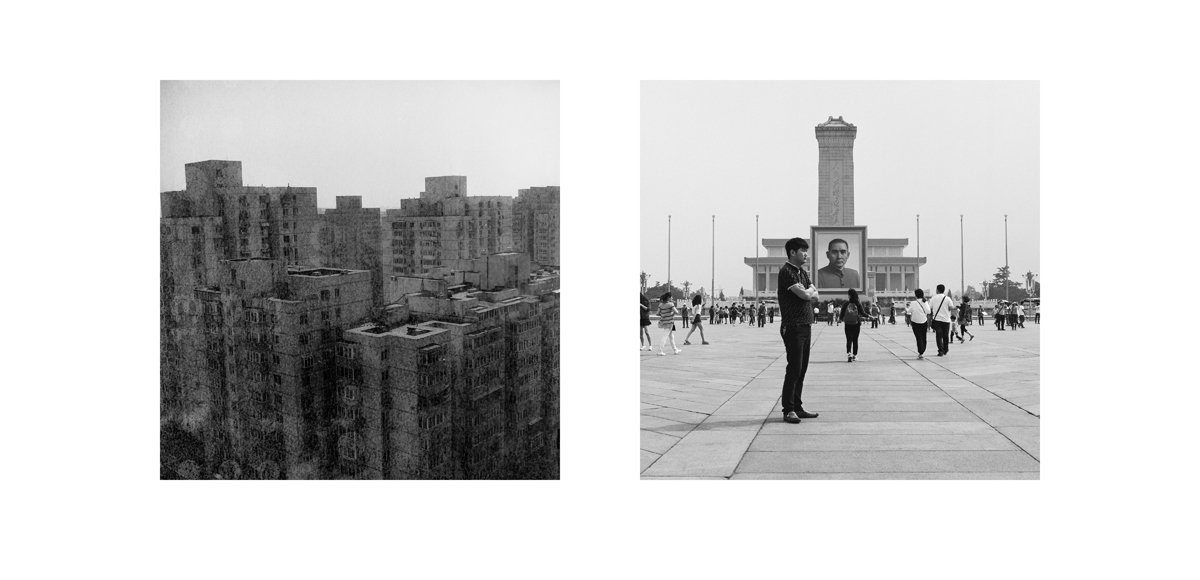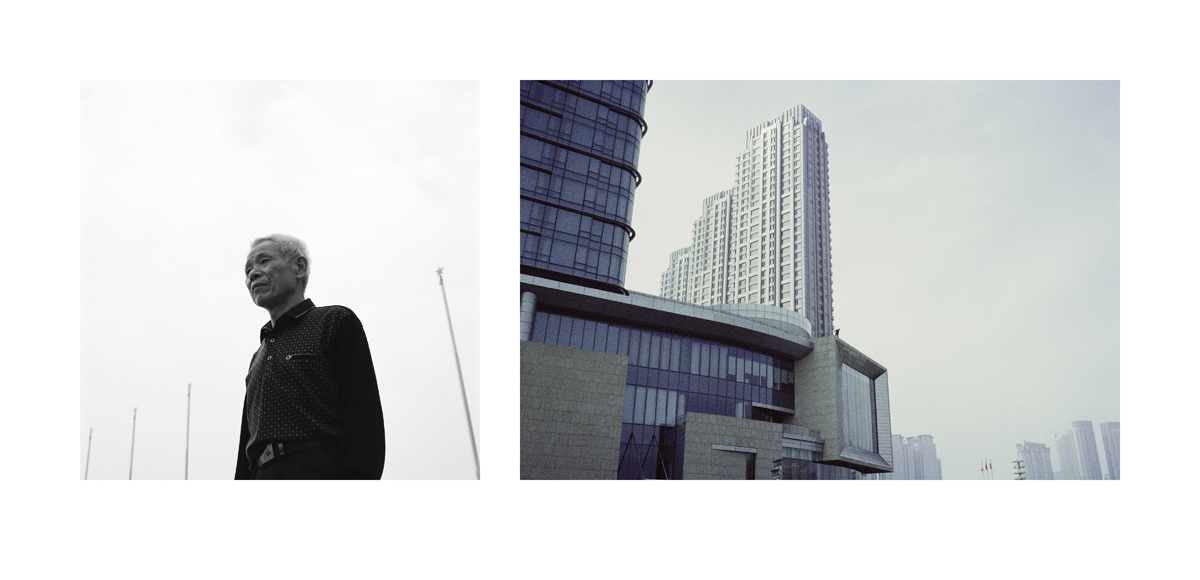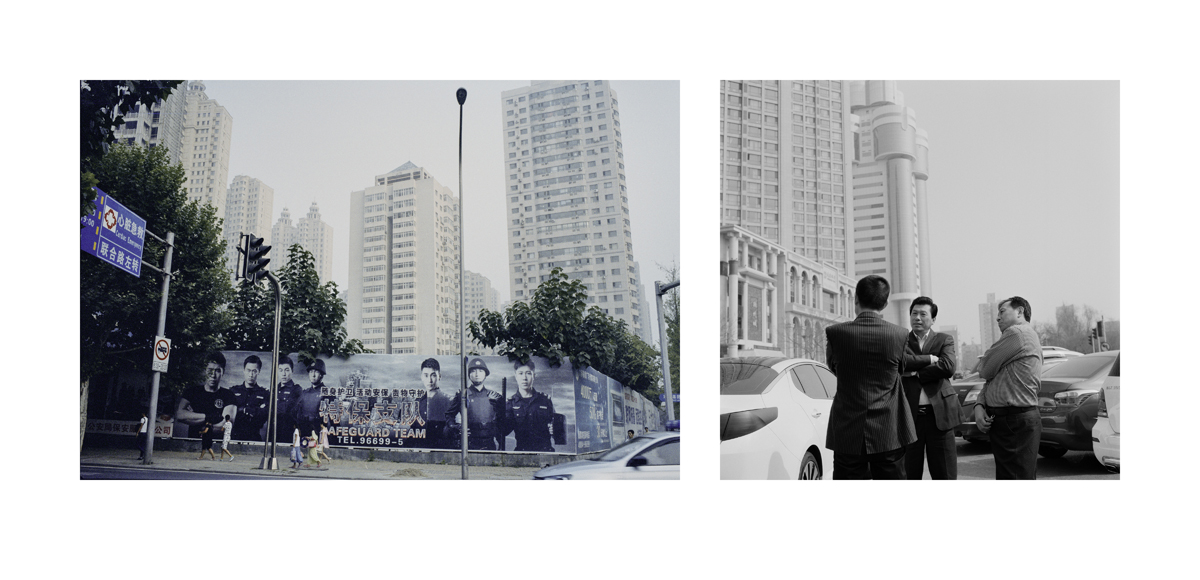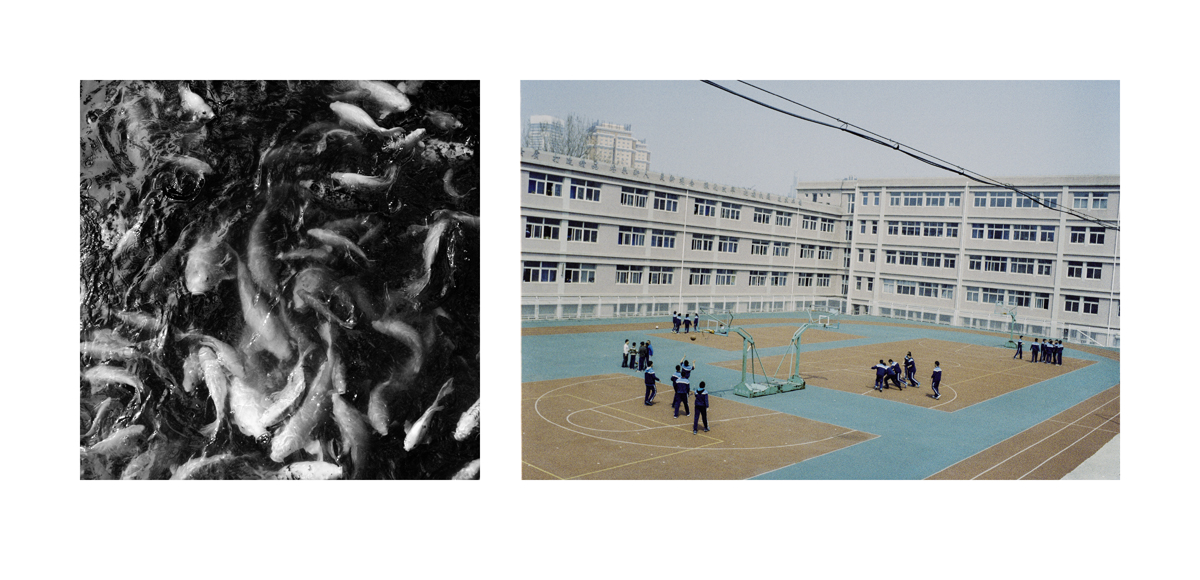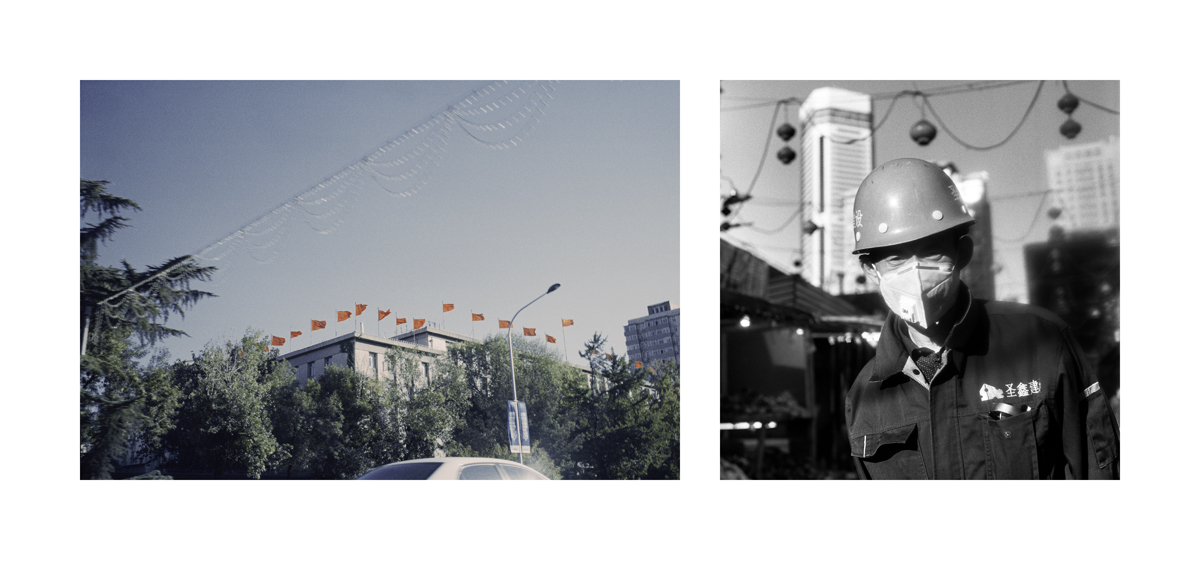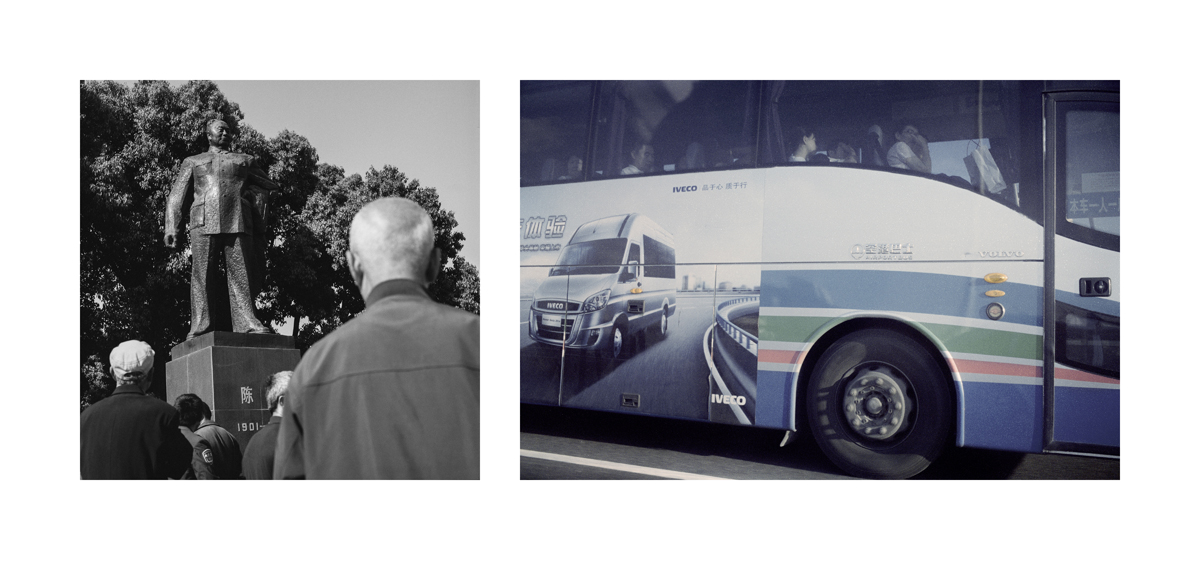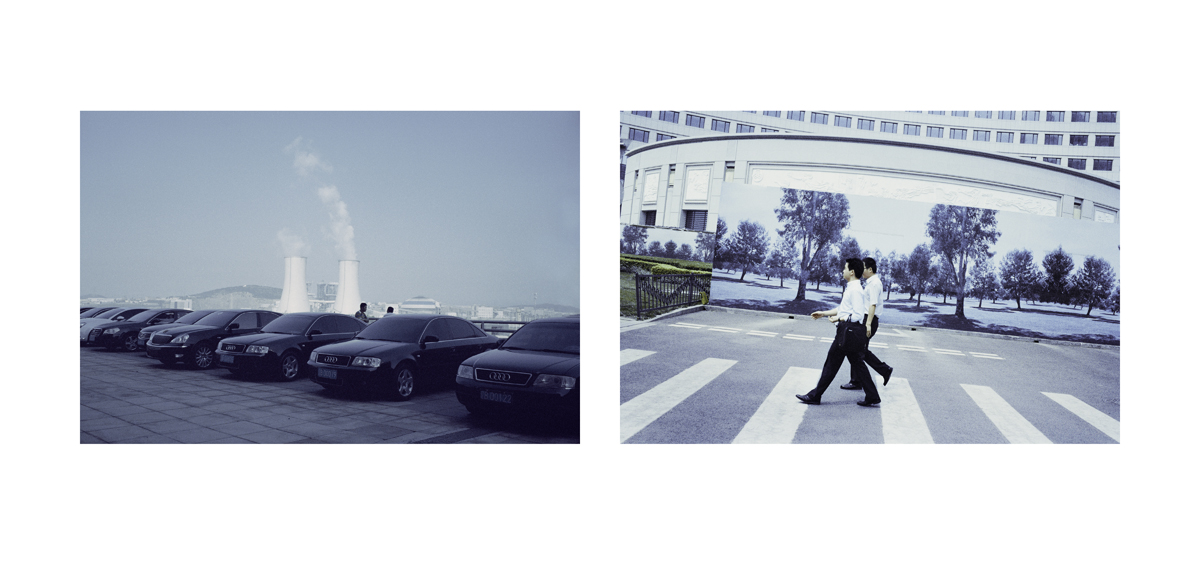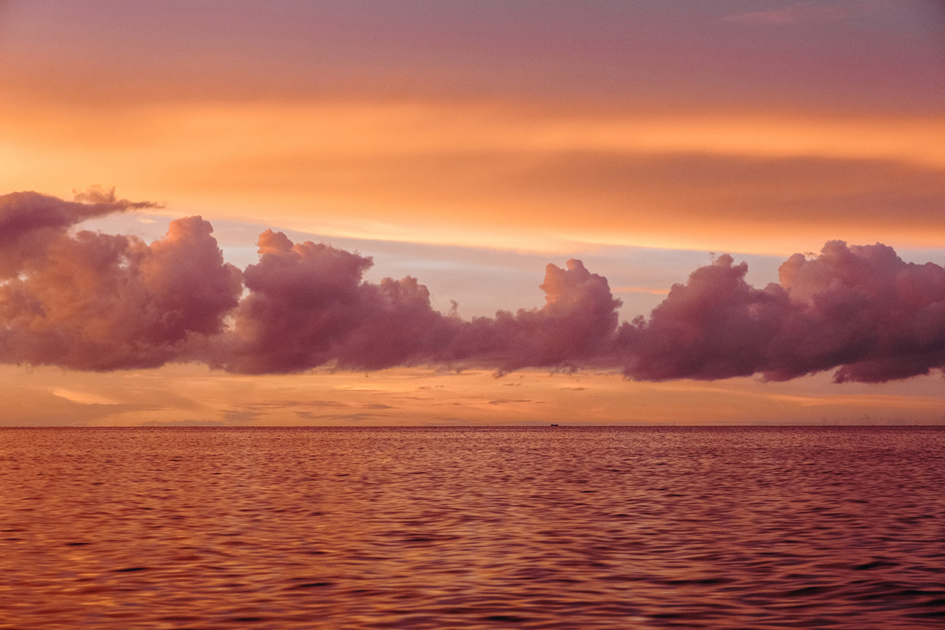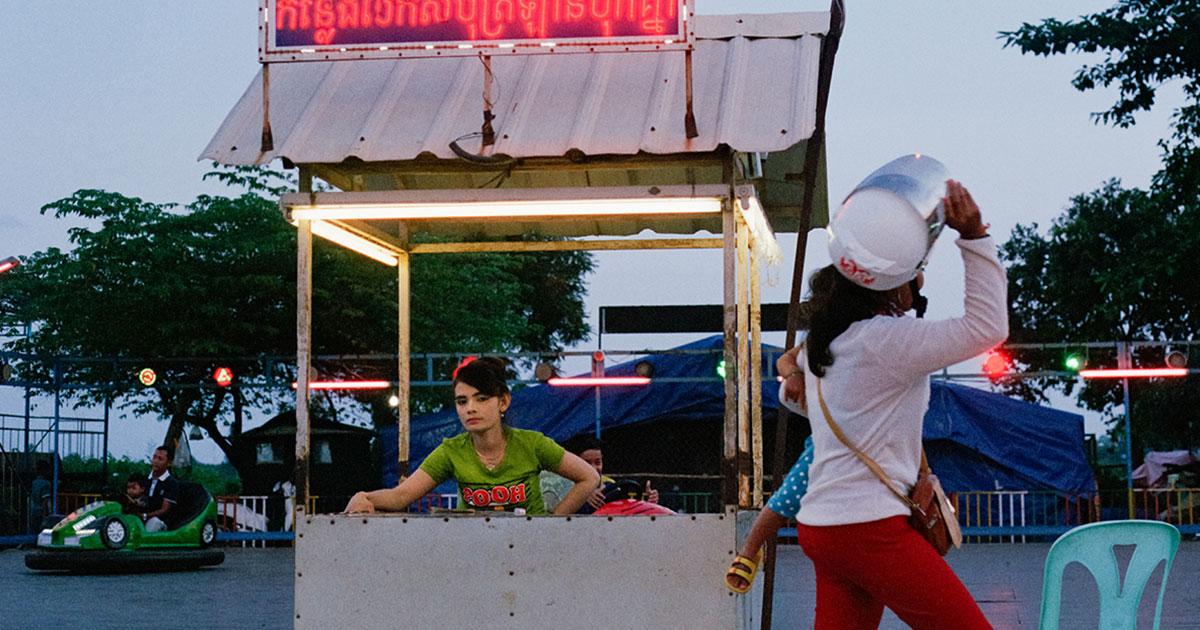Coming through the air: pollution and post-communism in urban China
Go EastHungarian-born photographer Orsolya Luca left London for China in order to get away from things. In the middle of smog and unfamiliar streets, she discovered a world very much like the land of her birth.
When London-based photographer Orsolya Luca travelled to China, she couldn’t help but notice similarities with her childhood memories of Hungary, when the country was still behind the Iron Curtain. So she picked up her camera to make sense of it all, shooting a project on two out-of-production Chinese films — Lucky and Shanghai — after which the eventual series takes its name. She told The Calvert Journal why this was the hardest series she’s had to shoot so far.
The first time I visited East Asia was in April 2015, to visit a friend of mine who was working in China at the time. After a year in London, where I had been studying, I needed to get away from the superficiality of it all. I wanted to concentrate on work and to just be alone in a place unknown to me. Leaving some things behind is an unconscious way to process them.
When I first arrived I spent some weeks in Japan and right after that I travelled on to China for the first few months. In that year, I traveled back and forth a few times between Europe and Asia and I also visited South Korea and the Philippines.
I visited Beijing, Shanghai and Dalian, all in different times of the year. I was more interested in industrialised cities because I grew up in one just like them — a city called Tatabánya. Dalian was the most interesting. It is a fast-growing city with lots of history. It’s located on the North-East coast — surrounded by the Yellow Sea and inland Bohai Sea, not far from North Korea, Vladivostok and Tianjin.
That is only important because I was in Dalian when that huge explosion ocurred at the port of Tianjin in August of 2015. All the smog and pollution came to that area by the wind and the visibility was only 5 metres for days afterwards. That smog came inside the buildings through the air ventilation system. I can’t describe the emotional state, when you can’t breathe relatively clean air for days.
I remember being shocked by the grey sky above Beijing. I’d heard a lot about the air and water pollution but it is a completely different story when you experience with your own lungs and body. I think that the most shocking thing is when you realise that this pollution comes from the coal-based factories that mainly produce things for the western world — for us.
Growing up behind the Iron Curtain, I was curious to see what communism means and looks like in China. This formed the core of my interest. China is very different now from what I had experienced as a child. Today it is one of the world’s leading economic and political superpowers.
Poverty does exist on a different scale, but so does luxury. It was fascinating to see chickens carried in a Bentley or see women burning trash in the front garden of a housing estate. It was all tragicomedy; for me it was hard to keep emotional distance and just keep going and observing.
I visited various historical places — I remember walking along the Chang’an avenue that leads into Tiananmen Square in Beijing. I couldn’t think of anything else but the bloodshed in 1989 when hundreds if not thousands of unarmed, peaceful pro-democracy protesters were shot here. The buildings on that avenue are mainly government buildings no different from any public square across the world.
Being there, however, is a completely different experience. When you cross any space like this you need to go through several checkpoints and scans, just like at the airport, even if you go to the metro. I could hardly believe that they really check the bags of each person and tourist who goes onto Tiananmen Square. I recognised the weapon of intimidation. Somehow it is a very good tool in these countries and it is really depressing.
This sort of thing is simply the surface, the tip of an emotional state I captured that exists in autocratic systems. I wasn’t sure what I was photographing at that moment. I just tried to pay attention to what I was in. I connected these things later on when I was editing the project.
I started to notice the connection between China and Hungary almost immediately. I saw it in the industrial power plants, construction sites, high voltage cables, housing estates, transportation vehicles, prison-like schoolyards, grandiose public squares, monuments to political leaders. These are aesthetic similarities, like the little girl in the pioneer uniform: that outfit is only known in the post-Soviet world.
I haven’t seen such a thing since 1989 and probably I was the last generation who had to wear it in Hungary. Most importantly I saw similarities in the general mindset. Hierarchy in China is a lot more important than in the West. People usually don’t think they can influence their own future and therefore they like to rely on political leaders.
Homesickness is not really the right word for my feelings: I left my home country when I was 19. I moved to Canada and later on to England. I lived abroad for years. It was a mixture of nostalgia and anxiety that I felt in China, the same anxiety I feel when I go back to Hungary. In a western society you can easily become the prisoner of materialistic values, but at least you have the choice.
As soon as I leave Budapest, I know I am responsible for my own future and it depends mainly on my own deeds. This project is intended to process and understand this mix of emotional states and my interest in industrialised cities.
It was one of the hardest projects I have shot so far. It required intense willpower. Spending weeks and months photographing the streets is physically challenging. The pollution injected a depressing mood into the project and caused constant anxiety.
I think I am a lot stronger after this and I am able to take on everything I learned onto my next project. On the psychological level, this project was self-liberating and brought me together with myself.
